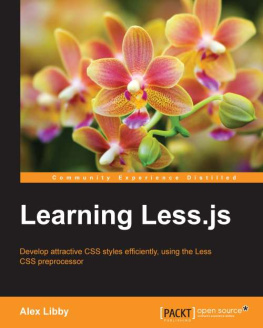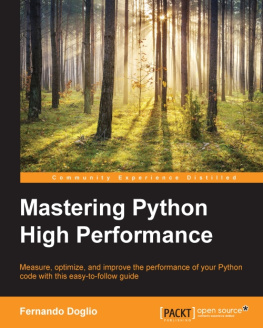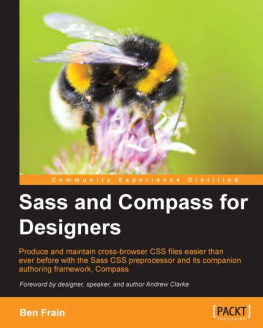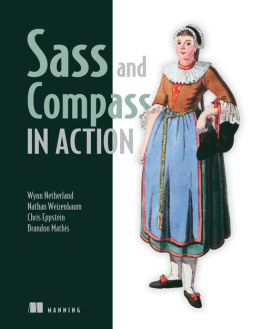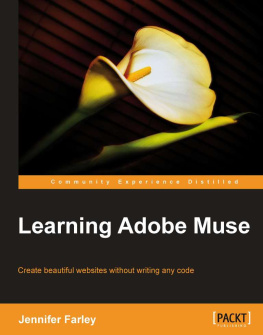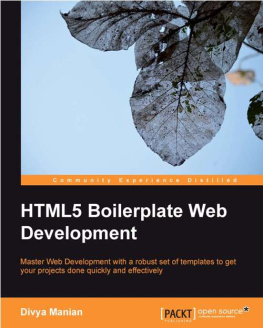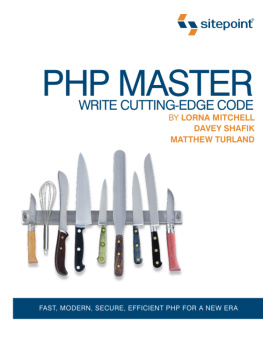Alex Libby - Mastering PostCSS for Web Design
Here you can read online Alex Libby - Mastering PostCSS for Web Design full text of the book (entire story) in english for free. Download pdf and epub, get meaning, cover and reviews about this ebook. year: 2016, publisher: Packt Publishing - ebooks Account, genre: Computer. Description of the work, (preface) as well as reviews are available. Best literature library LitArk.com created for fans of good reading and offers a wide selection of genres:
Romance novel
Science fiction
Adventure
Detective
Science
History
Home and family
Prose
Art
Politics
Computer
Non-fiction
Religion
Business
Children
Humor
Choose a favorite category and find really read worthwhile books. Enjoy immersion in the world of imagination, feel the emotions of the characters or learn something new for yourself, make an fascinating discovery.
- Book:Mastering PostCSS for Web Design
- Author:
- Publisher:Packt Publishing - ebooks Account
- Genre:
- Year:2016
- Rating:4 / 5
- Favourites:Add to favourites
- Your mark:
Mastering PostCSS for Web Design: summary, description and annotation
We offer to read an annotation, description, summary or preface (depends on what the author of the book "Mastering PostCSS for Web Design" wrote himself). If you haven't found the necessary information about the book — write in the comments, we will try to find it.
- Incorporate cutting-edge styles in your web pages with PostCSS
- Simplify the process of writing CSS to a great extent using PostCSS shortcuts, fallbacks, and pack plugins
- This in-depth, step-by-step guide will help you master PostCSS, to create amazing and responsive web designs
PostCSS is a tool that has quickly emerged as the future of existing preprocessors such as SASS and Less, mainly because of its power, speed, and ease of use. This comprehensive guide offers in-depth guidance on incorporating cutting-edge styles into your web page and at the same time maintaining the performance and maintainability of your code.
The book will show how you can take advantage of PostCSS to simplify the entire process of stylesheet authoring. It covers various techniques to add dynamic and modern styling features to your web pages. As the book progresses, you will learn how to make CSS code more maintainable by taking advantage of the modular architecture of PostCSS. By the end of this book, you would have mastered the art of adding modern CSS effects to web pages by authoring high performing, maintainable stylesheets.
What you will learn- Add mixin and variable support to PostCSS along with conditional support
- Explore the different ways of nesting code such as BEM and standard nesting within PostCSS
- Optimize media queries built with PostCSS to get the best performance
- Add dynamic styling elements such as images, fonts, grids, and SVG and retina support using existing preprocessors as well as PostCSS
- Get familiar with using plugins, and extend PostCSS with the API
- Build a fully working custom preprocessor and test it on different sites such as WordPress
- Write a custom syntax in PostCSS while still using pre-built syntaxes such as Less, SASS, or Stylus
- Provide support for future CSS such as CSS4 using current CSS3 classes
Alex Libbys background is in IT supporthe has been involved in supporting end users for almost 20 years in a variety of different environments; a recent change in role now sees Alex working as an MVT test developer for a global distributor based in the UK. Although Alex gets to play with different technologies in his day job, his first true love has always been the open source movement, and in particular, experimenting with CSS/CSS3, jQuery, and HTML5. To date, Alex has written 10 books on subjects such as jQuery, HTML5 video, SASS, and CSS for Packt and has reviewed several moreMastering PostCSS Web Design is Alexs eleventh book for Packt.
Table of Contents- Introducing PostCSS
- Creating Variables and Mixins
- Nesting Rules
- Building Media Queries
- Managing Colors, Images, and Fonts
- Creating Grids
- Animating Elements
- Creating PostCSS Plugins
- Working with Shortcuts, Fallbacks, and Packs
- Building a Custom Processor
- Manipulating Custom Syntaxes
- Mixing Preprocessors
- Troubleshooting PostCSS Issues
- Preparing for the Future
Alex Libby: author's other books
Who wrote Mastering PostCSS for Web Design? Find out the surname, the name of the author of the book and a list of all author's works by series.

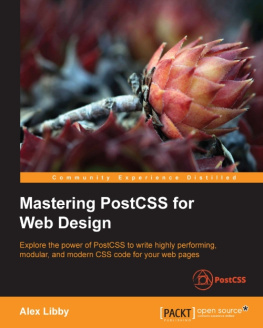


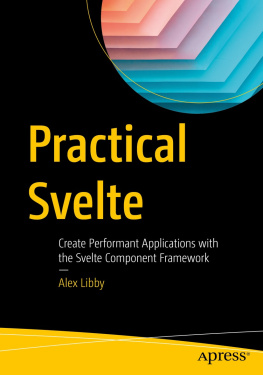
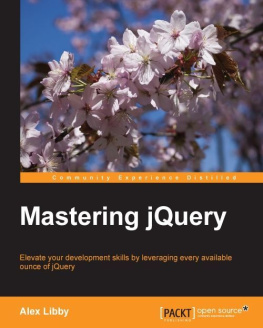
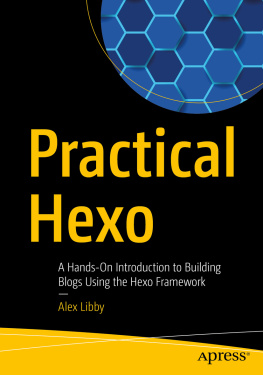
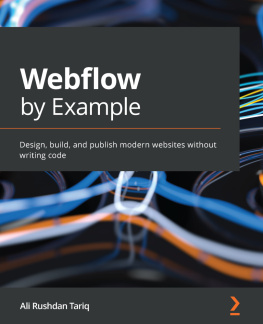
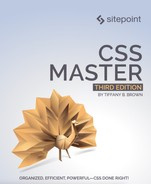
![Anirudh Prabhu [Anirudh Prabhu] - Beginning CSS Preprocessors: With SASS, Compass.js and Less.js](/uploads/posts/book/119148/thumbs/anirudh-prabhu-anirudh-prabhu-beginning-css.jpg)
![Ben Frain [Ben Frain] - Enduring CSS](/uploads/posts/book/119144/thumbs/ben-frain-ben-frain-enduring-css.jpg)
